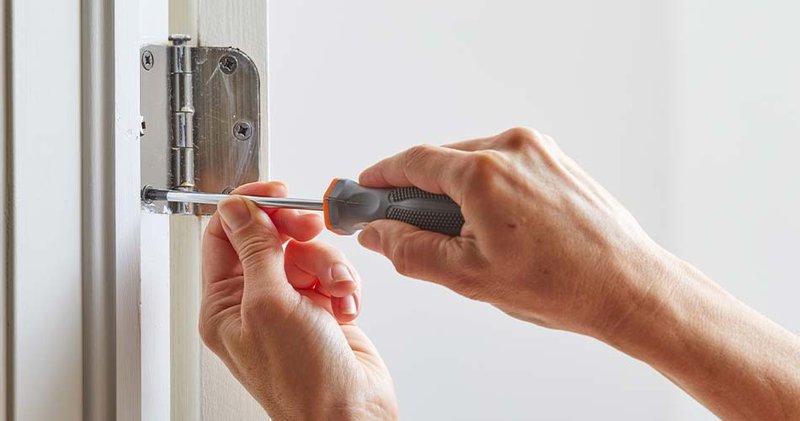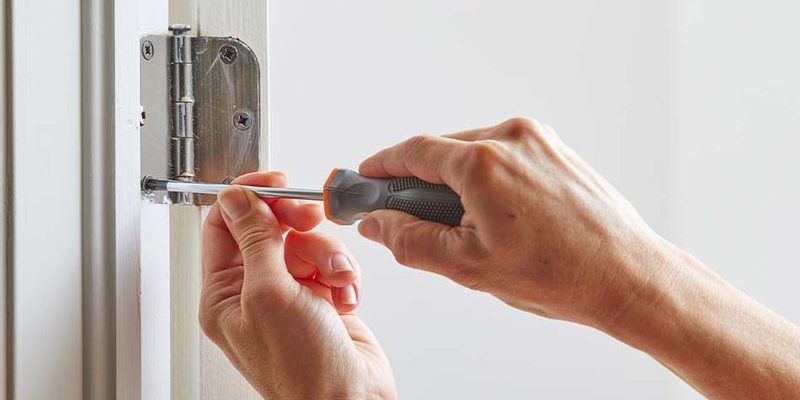
Doors can be fussy, especially if they haven’t had a little TLC in a while. A *thunk* sound can happen for various reasons, and understanding them isn’t as daunting as it seems. Whether you’re dealing with a squeaky door in your home or the office, there’s usually a simple fix. Let’s explore what might be causing that annoying sound and how you can troubleshoot it effectively.
Understanding the Cause of the ‘Thunk’ Sound
When your door hinge makes a *thunk* sound upon opening, it usually points to a few common issues. Sometimes, it’s as simple as a lack of lubrication. Think about it: just like you need to stretch before a workout, hinges need some oil to keep moving smoothly.
Another potential reason could be misalignment. If your door is dropping, it might not be hanging straight. As you open it, the hinge might struggle to support the weight, causing that jarring *thunk*. Lastly, old or worn-out hinges can also contribute to this problem. If your hinges are rusty or damaged, they may not function properly.
If you’ve ever experienced a door that wobbles or feels loose, you might be wondering how to troubleshoot this. Let’s take a closer look into these possible issues.
Step 1: Check for Lubrication
The first step in troubleshooting your door hinge is to check if it needs lubrication. Just like a car engine, hinges require grease to move freely. Here’s how you can do this:
- Get a can of lubricant, like WD-40 or silicone spray.
- Open the door halfway and spray the lubricant directly onto the hinge while it’s moving.
- Wipe off any excess with a cloth to avoid sticky buildup.
You should notice an immediate improvement. If the *thunk* persists, you might need to move on to the next step. Regular maintenance will ensure that your hinges last longer and stay quiet, so consider making this a part of your cleaning routine.
Step 2: Inspect for Misalignment
If lubrication doesn’t solve the problem, the next suspect is misalignment. Doors can shift over time due to various reasons, like humidity or changes in temperature. Here’s how to check for this:
- Examine the gap between the door and the frame. Is it even on all sides?
- Look for signs that the door might be rubbing against the frame when opened.
If the door is misaligned, you can often fix it by adjusting the hinges. Just follow these steps:
1. Use a screwdriver to slightly loosen the screws on the hinge.
2. Adjust the door’s position by pulling or pushing it gently until it’s even.
3. Tighten the screws again to hold it in place.
If you feel a bit out of your element, don’t worry! This process is pretty straightforward. Just think of it like rearranging furniture to make everything fit just right.
Step 3: Examine the Hinge Condition
If you’re still hearing that *thunk*, it may be time to check the hinge itself. Over time, hinges can become rusty, bent, or even broken. This is what you should do:
- Remove the door from the hinges by unscrewing them carefully.
- Inspect the hinge for any visible damage, like rust spots or cracks.
- Consider replacing the hinge with a new one if it looks worn out.
Replacing a hinge is generally an easy DIY task. Just make sure to pick a hinge that matches the size and style of the old one.
Step 4: Ensure Proper Installation
Sometimes, even new hinges can cause issues if they’re not installed properly. If you’ve recently replaced them or if you suspect this could be the issue, double-check your work. Ensure that the screws are tightened securely, and that the hinge is straight.
If the process feels daunting, don’t hesitate to call a friend for help or consult a professional. Sometimes, a second set of hands makes all the difference. Remember, getting it right the first time can save you from future headaches!
Prevention Tips for Quiet Doors
Now that you’ve trouble-shooted the *thunk*, let’s talk prevention. Keeping your door hinges in good condition is easier than you might think. Here are some tips to keep your doors quiet:
- Lubricate regularly: Make it a part of your seasonal maintenance.
- Check alignment: Whenever you notice any sticking or rubbing.
- Inspect hinges: Look for signs of wear and tear whenever you do your cleaning.
Being proactive can save you time and trouble down the road.
When to Call a Professional
If you’ve done everything and the noise still persists, it might be time to call in a professional. Some issues may not be easily visible or fixable without expertise. If you suspect a deeper problem with the door frame or structure, getting a pro to assess the situation can save you a lot of stress.
Don’t hesitate to reach out for help—often, it’s better to take a small hit from a professional than to end up causing more damage trying to fix it yourself.
Dealing with a door hinge that makes a *thunk* sound can be frustrating, but with a little patience and the right approach, you can get it sorted out. By understanding the causes, following the troubleshooting steps, and maintaining the hinges, you can keep your door functioning smoothly.
Remember, regular maintenance is key. Keep an eye on those hinges, and don’t let that pesky sound disrupt your peace any longer. You’ve got this!
